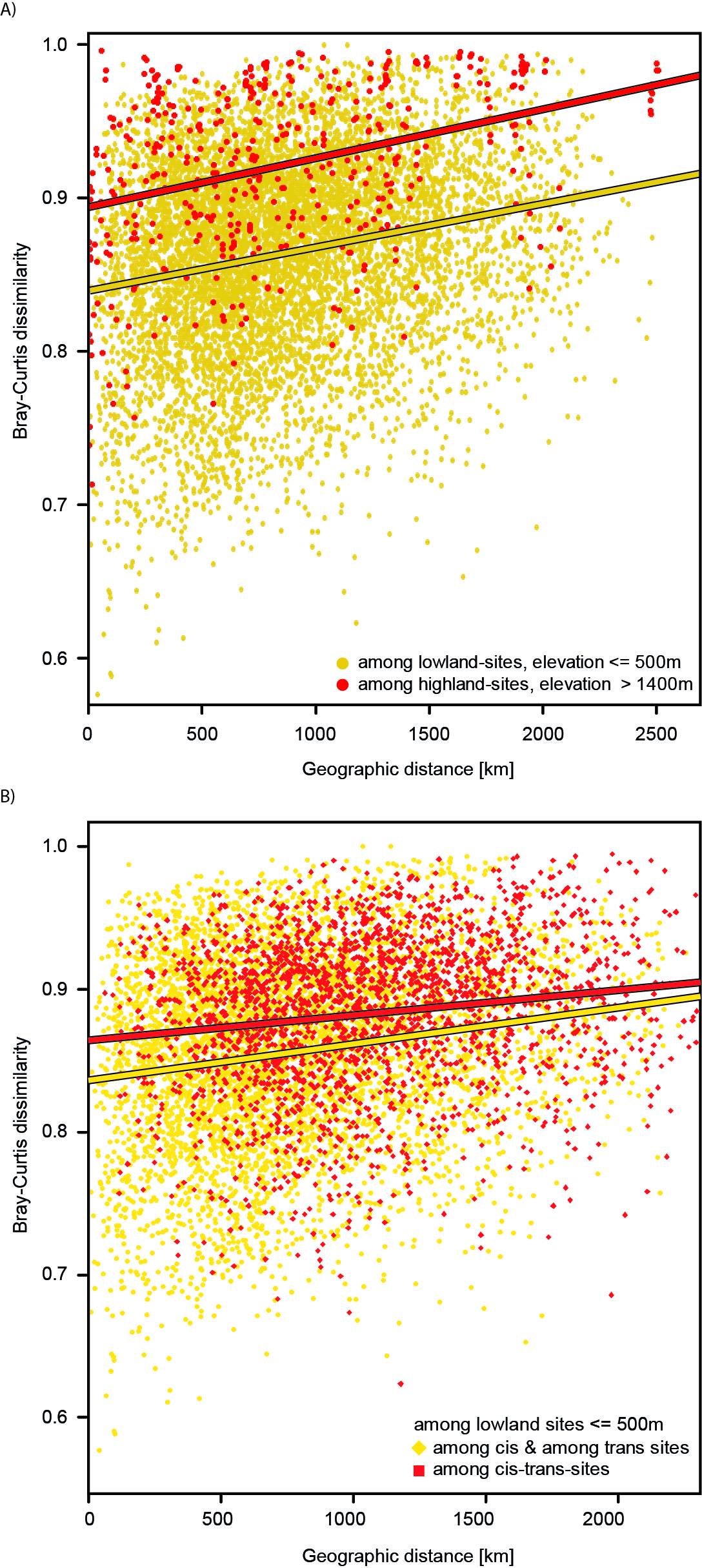
Effect of geographic distance on community dissimilarity. A) Habitat dissimilarity for high mountain lakes (above 1,400 m) and for lowland lakes (below 500 m). The latter were either separated (cis-trans pairs) or not separated by mountain ranges (cis-cis pairs, i.e. north of the Alps, Pyrenees and High Tatras and trans-trans pairs, i.e. south of the Alps, Pyrenees and High Tatras). Regression lines are shown for highland (blue), lowland cis-cis and trans-trans pairs (yellow), and lowland pairs separated by mountain ranges (orange). Habitat dissimilarity increased with distance for lowland lakes but did not change for high mountain lakes. B) Bray-Curtis community dissimilarity for the same groups as in A. Community dissimilarity in high mountain regions increased with distance even though habitat dissimilarity did not change with distance. For lowland lakes both, habitat characteristics and community composition, changed with distance. However, the effect of distance on habitat dissimilarity was independent on whether the lakes were separated by mountain ranges or not. In contrast, community dissimilarity was higher at low and intermediate distance for lakes separated by mountain ranges. Accordingly the slope of the regression line for cis-trans pairs was significantly lower as for cis- cis and trans-trans pairs (p = 0.0097). The effect of geographic barriers levels off for longer distances above approximately 1,500 km.